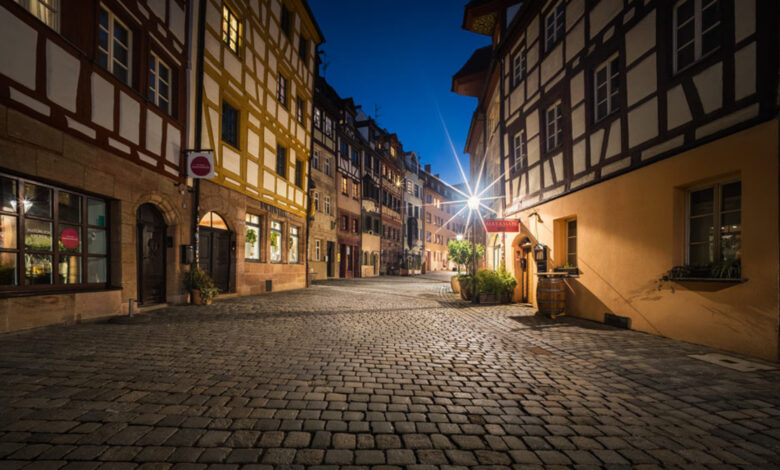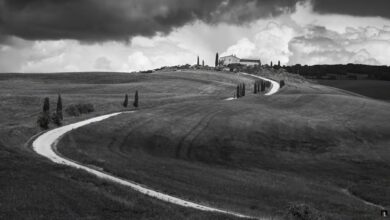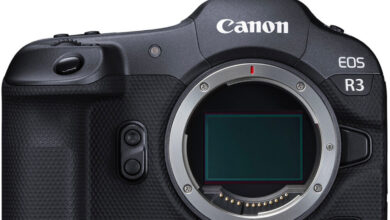How to improve your blue hour photo in photo editing

As you learned in a previous article, a great time to photograph cities is during blue hour. But the blue hour often lacks dimension and depth in the sky. With luck, you’ll have some clouds providing structure. But if you have a clear blue sky, the sky will usually be flat. In this article, I show you a trick that you can use to make such skies more interesting and improve your blue hour photos.
When you look at the before and after comparison of the edits I did to the Venice shot, you’ll notice some changes: the contrast is fine-tuned, the colors optimized, and the lighting enhanced. increase. But there is another important change. In the previous photo, processed in Lightroom and then brought into Photoshop, the sky is rather dull. The final image shows a gradient in the sky. It creates more dimension and acts as a vignette keeping the viewer in the center of the frame.
Before I show you how to create this effect in Lightroom and Photoshop, let’s first define it a little more clearly: what you see applied only to the sky is a bright, circular gradient. This definition already contains everything you need to know to recreate it.
Blue Hour Tricks in Lightroom
The new mask feature was introduced about a year ago to Lightroom allowing us to create this effect in Lightroom:
-
Go to the masking tool and click Choose Sky. It would make a pretty good choice, especially for clear skies.
-
You can now increase exposure settings, try white balance, and add or decrease saturation. Those settings are made for the whole sky.
-
To create a gradient effect, you can assign a selection to the sky with a radial selection. In the mask panel, hover over the plus or minus sign and hold the Alt key. The plus and minus buttons will be replaced by a rectangular intersection. Click it and choose Radial Gradient.
-
Use a Radial Gradient to create a texture in the sky.
Those adjustments help you create the illusion of fading light behind the city. They also increase the contrast between the horizon and the sky. Note that it adds visual weight to this area, so be careful when adding the effect. If you make it too strong, it can draw the viewer’s eye away from other important elements in your photo.
Blue Hour Trick in Photoshop
You can already do a pretty good job in Lightroom. So why would you want to use Photoshop? The simple answer is that you have more control over the selection. While AI selection tools have gotten better, they are still far from perfect. In Photoshop, you can fine-tune those selections. The rest of the workflow is similar to Lightroom, as I show in the introductory video.
- Make a selection for the sky. There are two ways to do so: Use the Magic Wand Tool to make the initial selection and refine it accordingly Select – Select and Mask. If you’re using one of Photoshop’s creative cloud versions, use Select – Sky and fine-tune the selection. Improving the selection that way is something you can’t do in Lightroom yet.
- Create a group and apply a mask to it, using the refined sky selection.
- Similar to in Lightroom, you can now make changes to the sky. You can add different adjustment layers to the group or place a copy of your current edit inside the group and go to Filter – Camera raw filter… You can now apply settings to lighten the image in a Lightroom style. After clicking OK, they will be limited to the sky area through the group mask.
-
Grab the Elliptical Marquee Tool and make a large circular selection that covers parts of the sky. Go Select – Modify – Feathers or press Shift + F6 and insert a high radius. Depending on the resolution of the photo, you may have to use a value of several hundred pixels.
-
Apply a mask to the effect layer using a selection. If you have multiple effect layers inside the group, you can create a second group inside the first with inner adjustments. Apply the mask to this new group. This stacking of multiple groups is a great way to combine different masks.
Getting the radius right may take a few tries. Alternatively, you can apply a black mask to your adjustment and paint on it with a soft, white brush to create a gradient in the sky.
Inference
This effect is one of the more subtle changes you can make to your photos, but that doesn’t mean it’s ineffective. Often, a combination of small changes results in a larger edit than a major one.








